Writing box index

History
of writing boxes
Request
current list of available writing boxes.
Online
History of boxes
| |
Antique Extremely rare 18th century writing box with chinoiserie decoration.
Please click on images to enlarge | slide show | thumbnail
index |
Reference: WB471
Description:
WB471: Extremely rare 18th century writing box with chinoiserie decoration.
This is a difficult box to date as it is extremely rare and work of this kind can date from the 17th to the early 19th century. The way the box is constructed points to the early to the middle part of the 18th century, before writing boxes were in more general use and in larger sizes made with flat tops. The technique and darkening varnish suggest early work. A conservative probability would be some time between 1740-60.
The box is made of mahogany with pine (later stained) used for the base of the side drawer and the base under the flap and the base of the box.
The top of the box is not hinged and it is simply removed to the side when the inner writing surface is in use.
The decoration was either done in a professional studio/workshop, or the box was supplied undecorated and finished at home. Such work was done following the instructions of J. Stalker and G. Parker who in 1688 expounded both technique and design in their Treatise of Japanning and Varnishing. They described their drawings of exotic scenes as ‘Patterns for Japan-work in imitation of the Indians’ reflecting the confusion of the times. By the time this box was decorated, other books of exotic designs, as well as travellers’ tales and drawings were in circulation, so the person who decorated the box would have probably had more than one source of inspiration. The technique of building up the parts and the ‘flavour’ of the design are very much in the manner and spirit of Stalker and Parker.
There are oriental figures in a garden with pavilions and trees. There is a stylised palm tree, a weeping willow and exotic looking shrubs. There are two standing and two seated figures. There are two rocks and Chinese railings. There are giant insects in the air. All these are recognisable elements in the reports of Chinese gardens. An eccentric note in the design is the painting of tree roots under the earth, suggesting that the garden is one of the ‘floating islands’ which were artificially constructed in the Imperial gardens.
|
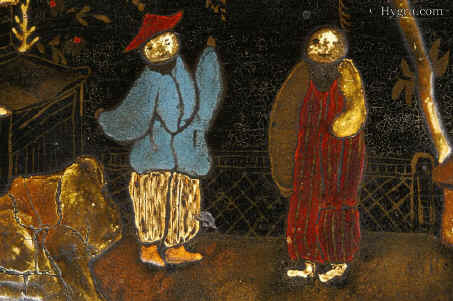
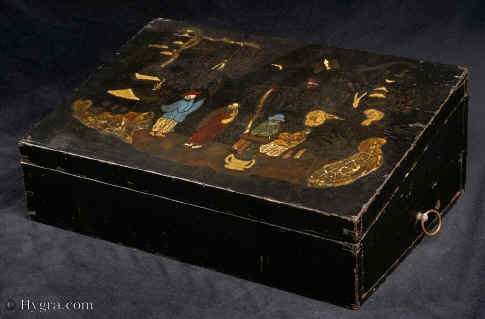
Origin: UK
Circa: 1740-60.
Materials:
Size: 41cm by 26.8cm by 15.5 cm tapering to 10 cm: inches by inches by inches.
Condition:
The writing surface is covered in old baize which is probably not original but an old replacement.
Chips and darkening of varnish.
|
Please click on images to enlarge | slide show | thumbnail
index |
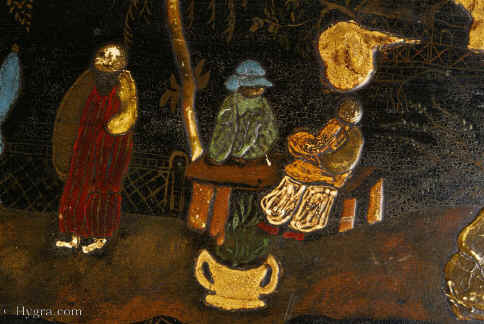
|
The decoration was either done in a professional studio/workshop, or the box was supplied undecorated and finished at home. Such work was done following the instructions of J. Stalker and G. Parker who in 1688 expounded both technique and design in their Treatise of Japanning and Varnishing. They described their drawings of exotic scenes as ‘Patterns for Japan-work in imitation of the Indians’ reflecting the confusion of the times.
|
The box has a side drawer of dovetail construction made of
mahogany and pine for storing papers.
|
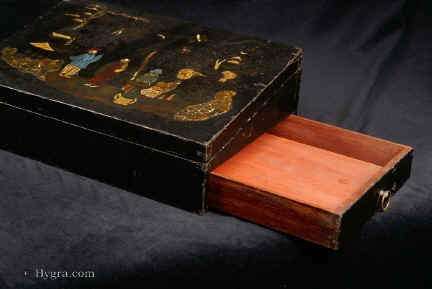
|
Please click on images to enlarge| slide show | thumbnail
index |
The top of the box is not hinged and it is simply removed to the side when the inner writing surface is in use.
The writing surface is covered in old baize which is probably not original but an old replacement.
|
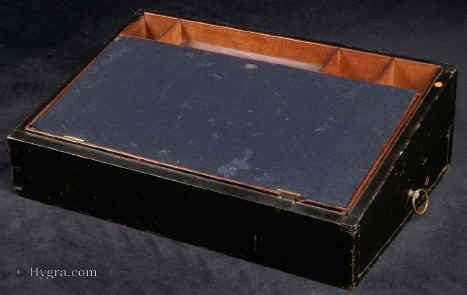
|
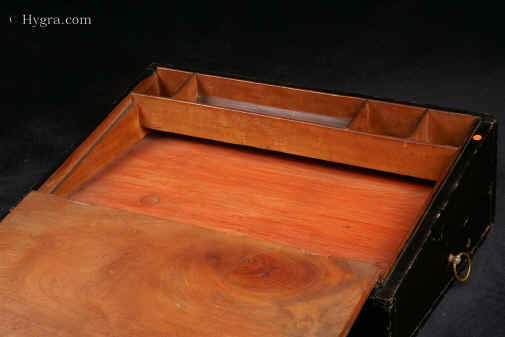
|
There is a compartment for storing papers under the
writing surface.
|
Please click on images to enlarge
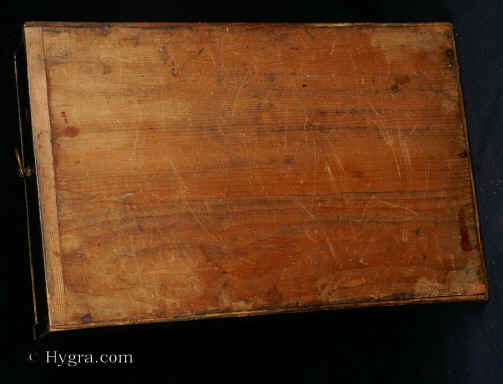
|
The bottom of the box is made of pine. |
Dovetail joints are used in the construction.
|
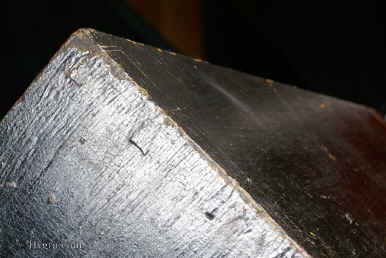
|
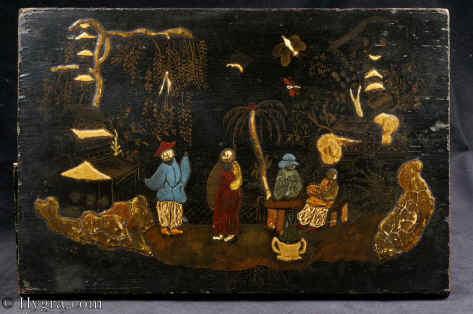
|
The decoration was either done in a professional studio/workshop, or the box was supplied undecorated and finished at home. Such work was done following the instructions of J. Stalker and G. Parker who in 1688 expounded both technique and design in their Treatise of Japanning and Varnishing. They described their drawings of exotic scenes as ‘Patterns for Japan-work in imitation of the Indians’ reflecting the confusion of the times. By the time this box was decorated, other books of exotic designs, as well as travellers’ tales and drawings were in circulation, so the person who decorated the box would have probably had more than one source of inspiration. The technique of building up the parts and the ‘flavour’ of the design are very much in the manner and spirit of Stalker and Parker.
There are oriental figures in a garden with pavilions and trees. There is a stylised palm tree, a weeping willow and exotic looking shrubs. There are two standing and two seated figures. There are two rocks and Chinese railings. There are giant insects in the air. All these are recognisable elements in the reports of Chinese gardens. An eccentric note in the design is the painting of tree roots under the earth, suggesting that the garden is one of the ‘floating islands’ which were artificially constructed in the Imperial gardens.
|
Please click on images to enlarge| slide show
| thumbnail
index |
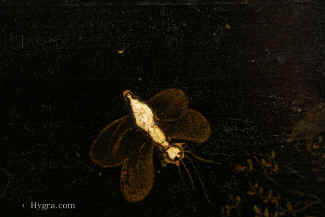
|
There are giant insects in the air.
|
Please click on images to enlarge| slide show | thumbnail
index |
Please click on images to enlarge| slide show | thumbnail
index |
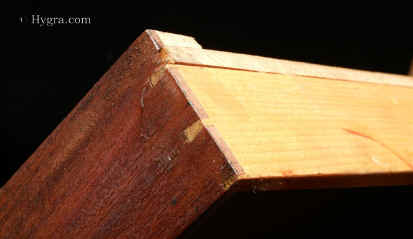
|
The drawer is constructed with dovetail joints and made from
pine and mahogany.
|
Please click on images to enlarge| slide show
| thumbnail
index |
Please click on images to enlarge| slide show
| thumbnail
index |
Request
current list of available writing boxes.
News
| Buying
| email | Online
History of boxes | The
Schiffer Book |
All text and images and linked images are ©
1999-2009 Antigone Clarke and Joseph O'Kelly. If you require any further
information on permitted use, or a licence to republish any material, email us
at copyright@hygra.com
|
